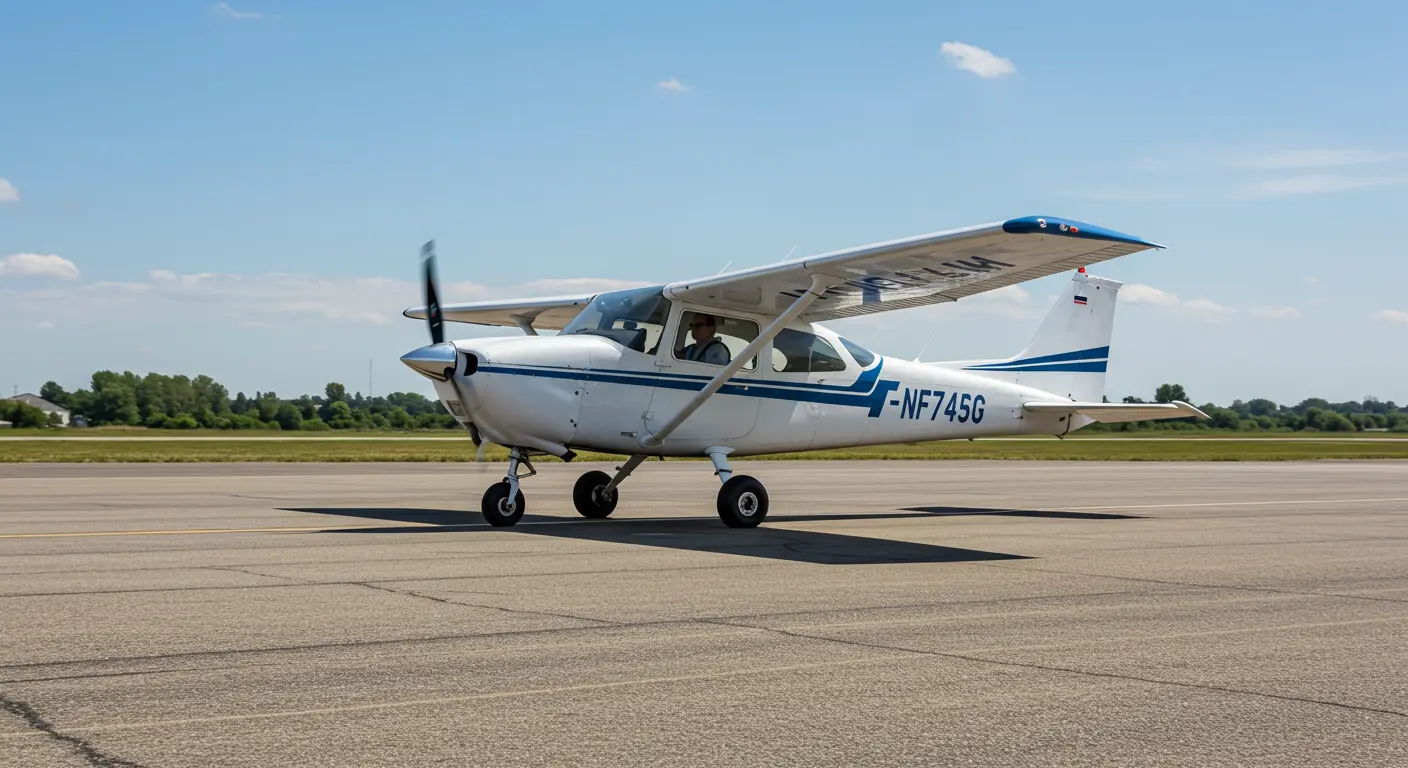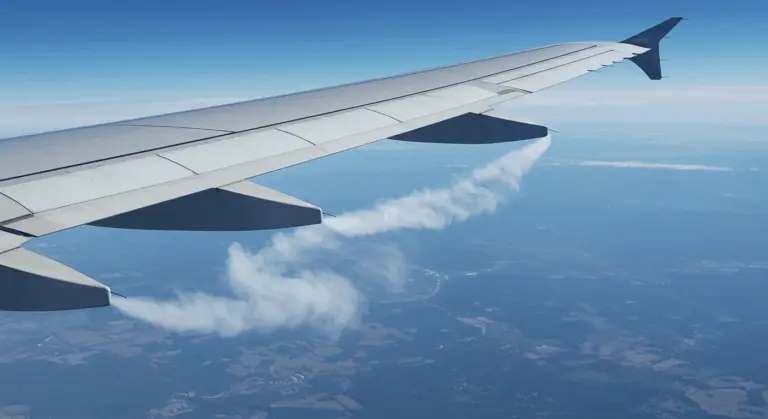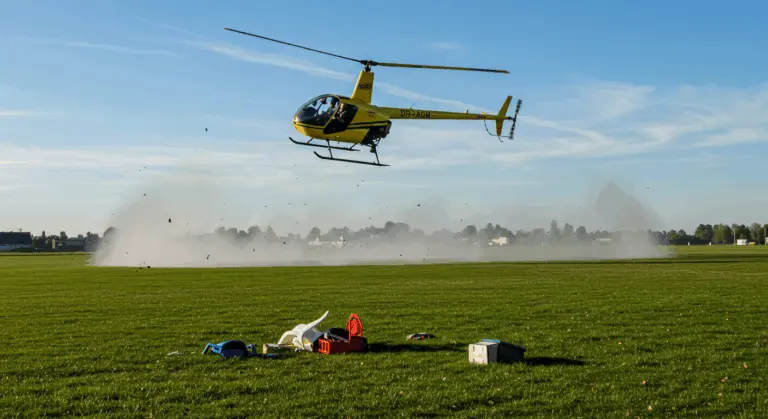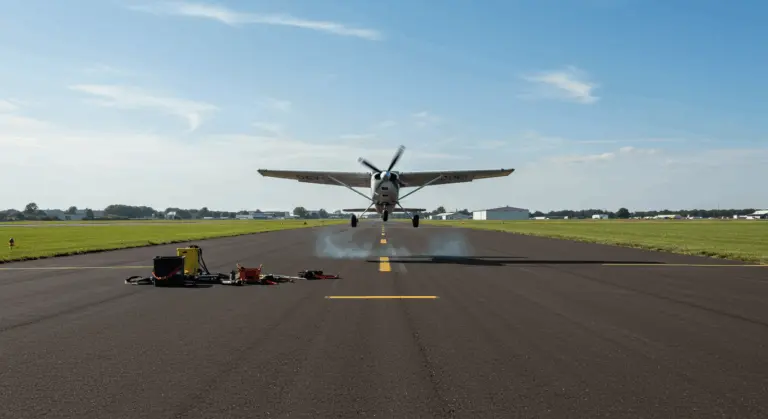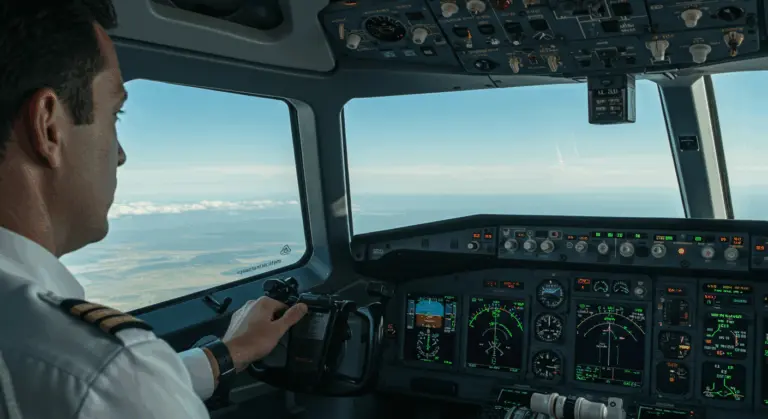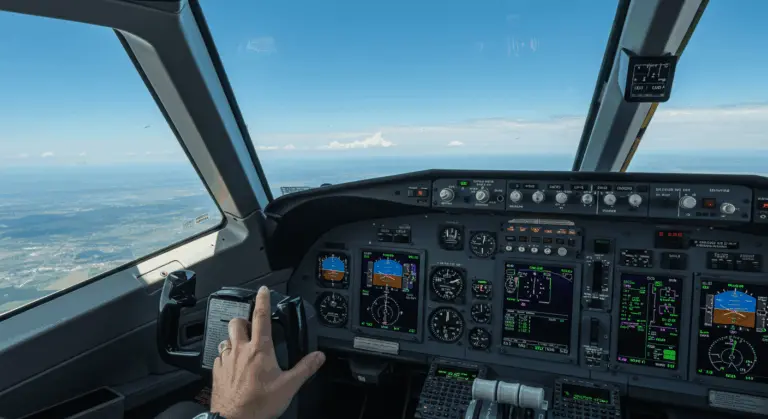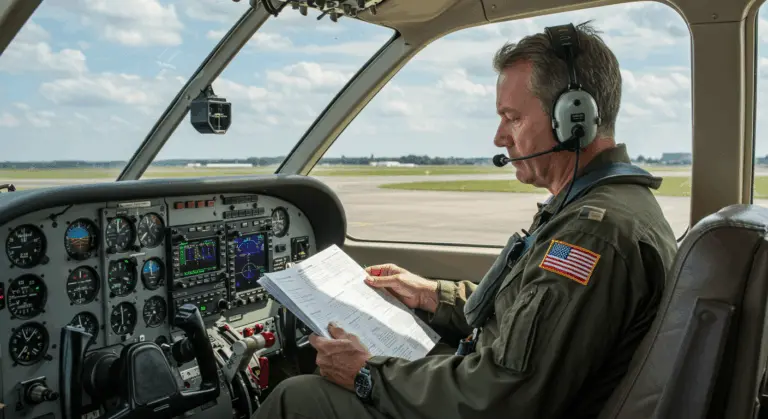Understanding Left Turning Tendencies in Aircraft
What Are Left Turning Tendencies?
Left turning tendencies represent a compelling array of aerodynamic and mechanical forces that work together to pull single-engine propeller aircraft leftward during flight. These forces reach their peak intensity during takeoff and climb phases, when high power settings meet low airspeeds—creating conditions that challenge pilots during the most critical moments of flight.
Four primary forces contribute to this tendency:
-
Torque: The reaction to the clockwise-spinning propeller, which causes the aircraft to roll left.
-
P-Factor (Asymmetric Propeller Loading): Uneven thrust from the propeller at high angles of attack, which yaws the nose left.
-
Spiraling Slipstream: A corkscrew of airflow from the propeller that pushes the tail right, yawing the nose left.
-
Gyroscopic Precession: A gyroscopic force that converts pitch changes into a leftward yaw.
During takeoff, these combined forces create a persistent leftward pull. Mastering the skill of right rudder application becomes essential—not just for maintaining directional control, but for developing the fundamental piloting instincts that separate competent aviators from the rest.
Understanding these left turning tendencies is fundamental to safe aircraft operation. Each force fluctuates dramatically based on aircraft configuration, power demands, and atmospheric conditions. By recognizing how and when these forces affect your aircraft, you can anticipate the necessary control inputs to maintain precise directional control throughout all phases of flight.
Causes of Left Turning Tendencies
Torque – The Force Behind the Turn
Torque stands as the most elemental of all left-turning forces, stemming from Newton’s Third Law of Motion: for every action, there is an equal and opposite reaction. In the majority of Western-manufactured aircraft, the propeller spins clockwise from the pilot’s perspective. As the propeller spins, the aircraft’s fuselage attempts to rotate in the opposite direction—counterclockwise, or to the left.
This rotational force becomes particularly dramatic during takeoff at maximum engine power. The torque reaction forces the left side of the aircraft downward against the runway surface, creating unequal friction between the wheels. This asymmetrical grip causes the aircraft to pivot left noticeably.
Torque’s influence varies significantly with power adjustments. When pilots apply full throttle for takeoff, the sudden increase in torque demands instantaneous compensation. Experienced pilots anticipate this by applying right rudder pressure proportional to the power being applied. As airspeed builds and the aircraft becomes more aerodynamically efficient, the relative impact of torque diminishes, requiring the pilot to gradually reduce rudder input to maintain straight flight.
Understanding P-Factor
P-Factor—or asymmetric propeller loading—is another significant factor to leftward drift. This aerodynamic phenomenon manifests when aircraft operate at steep angles of attack, such as during takeoff or aggressive climbs, causing the propeller disc to can’t backward relative to the oncoming airflow.
With the propeller angled in this configuration, the descending blade on the right side of the aircraft (when viewed from the cockpit) encounters the oncoming air at a more direct angle and with greater relative velocity than the ascending blade on the left side. This forces the descending blade to take a larger bite of air, generating more thrust on the right side of the propeller disc. The uneven thrust distribution creates a yawing moment that pushes the aircraft’s nose to the left.
P-Factor is strongest at high power and low airspeeds. Yet as aircraft accelerate and angle of attack diminishes in cruise flight, this force becomes less noticeable.
Gyroscopic Precession Explained
Gyroscopic precession is an interesting physical effect contributing to left-turning tendencies. This effect occurs because an aircraft’s propeller functions as a gyroscope—a spinning disc that resists changes to its plane of rotation. What makes gyroscopic precession particularly fascinating is that when a force is applied to a spinning object, the resulting reaction occurs approximately 90 degrees later in the direction of rotation.
In practice, this translates to a counterintuitive reality: when forces act upon the top or bottom of a spinning propeller—such as during pitch attitude changes at takeoff—the reaction doesn’t occur where you’d expect. Instead, it manifests 90 degrees ahead in the rotational path. Since most aircraft propellers spin clockwise from the cockpit view, a force applied to the propeller’s crown creates a reaction at the three o’clock position, yawing the nose leftward.
Gyroscopic precession is most pronounced in tail wheel aircraft during the dramatic tail-raising moment of takeoff, but tricycle gear aircraft also experience it when rotating. Understanding this principle is essential, as it explains why rudder inputs must change during pitch adjustments.
The Role of Slipstream in Left Turning Tendencies
The spiraling slipstream effect adds another element into an aircraft’s leftward tendencies. Picture the propeller as a giant corkscrew, churning the air into a helical vortex that spirals backward along the fuselage.
As the clockwise-spinning propeller generates forward thrust, it simultaneously imparts rotational momentum to the entire airflow. This spiraling air mass travels backward along the fuselage until it encounters the vertical stabilizer and rudder. Due to this rotational pattern, the swirling vortex strikes the left side of the vertical stabilizer with disproportionate force. The resulting pressure differential pushes the tail assembly to the right, which in turn causes the nose of the aircraft to yaw toward the left.
This phenomenon is strongest during high-power, low-airspeed scenarios—precisely when the rudder possesses minimal aerodynamic authority. Right rudder becomes the pilot’s main tool to counter this effect.
However, as aircraft gather speed and slice through the air more efficiently, the relative impact of the spiraling slipstream diminishes. This transformation occurs because increased forward velocity diminishes the angular displacement of the spiraling airflow relative to the longitudinal axis of the aircraft. Additionally, at higher speeds, the control surfaces become more effective, making it easier for pilots to counteract any remaining slipstream effects.
Counteracting Left Turning Tendencies
Controlling an aircraft’s inherent leftward bias demands both finesse and deep understanding of control dynamics. The primary method pilots use to counteract these forces is the application of right rudder pressure. This technique becomes absolutely crucial during takeoff and initial climb—moments when these forces combine to create their strongest effect.
The required right rudder input isn’t static—it varies with power and airspeed changes. Higher power demands stronger rudder input. At low airspeeds, the rudder feels mushy and demands bold inputs, while at higher velocities, it becomes highly and responsive to the subtlest touch.
Aircraft configuration significantly affects these leftward forces. For example, when flaps are extended or during climbing flight with a high angle of attack, P-factor becomes more pronounced, necessitating additional right rudder compensation. Pilots must develop a feel for these changing conditions and adjust their rudder inputs accordingly throughout different phases of flight. This changing relationship requires constant attention and precise control rather than static control positions.
For aspiring aviators, mastering rudder coordination is an important step in their journey toward airman ship. Flight instructors typically emphasize the importance of maintaining the aircraft in coordinated flight by teaching students to monitor the inclinometer or “ball” indicator. When the ball remains centered, it indicates that the pilot is applying the correct amount of rudder to counteract left-turning tendencies. Through dedicated practice, this coordination becomes automatic with practice.
Using Right Rudder Effectively
Perfecting right rudder application is essential for directional mastery in single-engine aircraft. The key to effective rudder usage depends on understanding its relationship with power changes. When increasing throttle—such as during takeoff—pilots should simultaneously and progressively apply right rudder pressure to counteract the intensifying left-turning forces. This application must flow smoothly and proportionally with power increases—never jarring or ham-fisted.
Conversely, as power is reduced during level-off or descent, pilots should gradually decrease right rudder pressure. This fluid adjustment forges an intuitive bond between power and rudder that eventually becomes second nature. Many instructors teach the concept of ‘right rudder follows power’—a simple but effective mental model that helps pilots develop proper habits. During training, prioritize sensing the aircraft’s subtle responses over mechanically applying predetermined pressures, as each aircraft model will require different levels of compensation.
Masterful rudder technique depends on anticipation, not reaction. Experienced pilots learn to apply right rudder slightly before it’s needed, particularly during predictable power changes. For example, when initiating a go-around from a low approach, applying right rudder simultaneously with power prevents the aircraft from yawing left before the tendency fully develops. This forward-thinking approach provides better directional control and smoother flight.
New pilots frequently often make the mistake of ‘riding the rudders’—making constant, fidgety adjustments showing their lack of experience. Instead, establish the appropriate amount of rudder for the current flight condition and maintain steady pressure until power or configuration changes necessitate an adjustment. While instruments like the inclinometer provide valuable feedback, develop the skill to sense coordinated flight through tactile awareness—what old-timers call ‘flying by the seat of your pants.’ With practice, proper rudder coordination becomes second nature.
Conclusion: Mastering Left Turning Tendencies
Mastering left-turning tendencies is more than just a technical checkbox—it separates between novice pilots and seasoned aviators. These aerodynamic forces create forces that consistently pull single-engine aircraft leftward, particularly during the high-stakes moments of takeoff and climb.
Real skill requires both deliberate practice and intimate familiarity with the underlying aerodynamic principles. The capacity to anticipate and seamlessly counteract these forces improves the flight experience by enhancing passenger comfort while reducing pilot workload and improving overall efficiency.
Beyond mere rudder technique, mastering left-turning tendencies provides valuable insights into aircraft behavior and performance characteristics. This knowledge forms the foundation for more advanced maneuvers and techniques as pilots progress in their training. Each aircraft model expresses these tendencies uniquely—influenced by propeller dimensions, engine characteristics, and airframe geometry. By developing a nuanced understanding of how these forces manifest in your specific aircraft, you’ll enhance your overall airman ship and confidence in the cockpit. Ultimately, mastering these forces marks a defining moment in every pilot’s evolution toward true airman ship.

